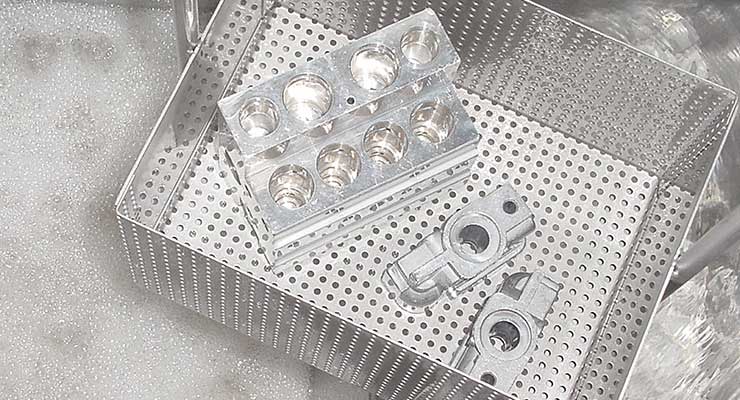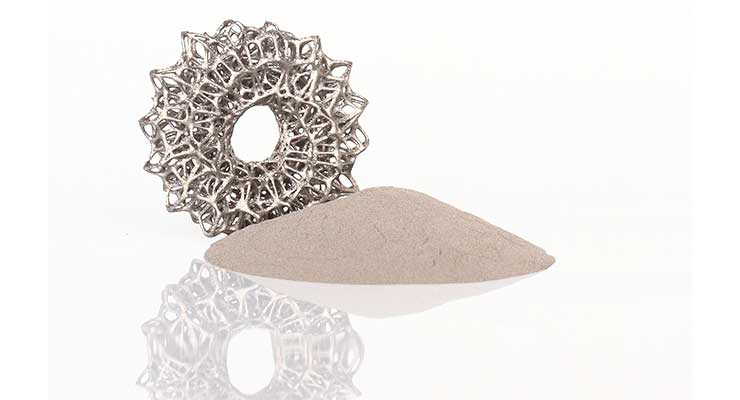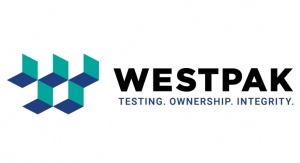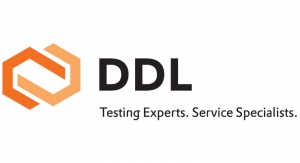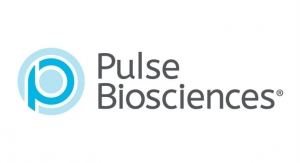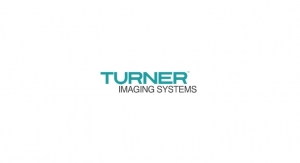Venesia Hurtubise, Technical Chemist, MicroCare Medical11.04.20
As the pressure to produce more complex biomedical parts increases, medical device manufacturing using 3D printing is gaining widespread acceptance. As the process becomes better and more stable, more manufacturers are exploring 3D printing, also known as AM or additive manufacturing, as a possible device-making option.
In the past, design compromises were made for medical devices that were too intricate, too small, too expensive, or too time-consuming to produce with more traditional manufacturing methods. But now, AM makes device designs almost limitless. It allows designers to make devices more precise, lighter, or stronger than their traditionally manufactured counterparts. Plus, AM allows greater schedule flexibility. Device makers can quickly produce prototypes or even fully finished parts without the long wait times of traditional tooling or mold-making.
The Benefits of AM
AM recently proved this flexibility during the COVID-19 pandemic. Ventilators and ventilator parts were in short supply and needed reliable production, fast. Through use of AM, device manufacturers quickly produced a ready supply of machines and parts by eliminating the lead time associated with metal injection molding or machining.
The most common use for AM is making production support tools like jigs and fixtures. It is also used for small-volume runs of very complex parts such as high-precision surgical tools, or to make highly-customized medical devices such as dental aligners and personalized orthotics. AM also appeals to device makers when security is a concern. Rapid in-house 3D prototyping enhances design confidentiality. Device designs are never publicly shared with outside service providers like mold or die makers, protecting patents, trademarks, and intellectual property.
The Parts Building Process
AM uses sophisticated 3D printing equipment and a variety of construction materials to produce parts. These include medical-grade stainless steel to reactive metals such as titanium and other alloys to produce high-performance precision parts that meet both FDA regulations and customers’ exacting standards.
During the AM manufacturing process, parts are built using a layering process. An admixture of the chosen powdered metal and a binder are deposited onto a build plate in successive layers until the green parts form. Common types of binders include paraffin wax, carnauba wax, and specialty polyethylene waxes.
The binders help form the metal powder into a specific shape. However, the binders are just temporary. Only a very small amount of binders stay inside the green parts to keep them from deforming and cracking during sintering. The rest of the binders are carefully removed to allow for faster, more complete sintering. Removal of the binders typically reduces sintering time from days to mere hours. Successful parts debinding is a balance of selectively removing exactly the right amount of binders as quickly as possible without damaging the fragile parts.
After debinding, the parts thermally sinter at near melting temperature. This burns off any remaining binders and bonds the metal powder into its solid mass state, which typically has 96 to 99.8 percent density. Then the brown parts are post-processed using standard finishing techniques like sanding, painting, or coating. The final result is high-quality AM parts with excellent dimensional repeatability.
The Debinding Fluid Must-Haves
In some production facilities, green parts debinding happens inside a vapor degreaser using a specialty debinding fluid. Depending on the part’s material and the binders used, the binders are removed from green parts by either immersing them in the boiling debinding fluid, by holding them inside the vapor blanket inside the vapor degreaser, or a combination of both. All methods rely on the debinding fluid penetrating the parts to effectively dissolve the wax and create enough porosity within the green parts to allow the binder to evaporate quickly before sintering.
Vapor degreasing is easily programmable and allows for excellent process control and repeatability. Green parts are consistently and effectively debound without variation through each and every cycle. Most importantly, vapor degreasing allows the green parts to come out clean, dry, and cool enough to immediately transfer them to the sintering oven. There is no extra cool-down time needed. Wax debinding in a vapor degreaser enables quick, efficient processing, resulting in shorter molding cycles and faster production runs overall.
Parts debinding is a simple process. However, it is important to get details right for the best possible end product. The debinding fluid must discriminately remove some of the binders, but not all, to ensure parts maintain structural integrity. To achieve this, the material properties of the debinding fluid are important.
Debinding fluids should be low viscosity. Less viscous debinding fluids flow around metal parts more easily for more complete debinding. The fluid should also have a low surface tension to allow it to work its way into the parts—especially inside tight, internal geometries. This ensures more thorough debinding and helps prevent parts deformation during sintering. Low viscosity and low surface tension fluids also flow out of the parts more easily. This is important because it helps ensure no debinding fluid stays inside blind holes or tight crevices. Trapped fluid inside the parts could cause gasified binders to expand, cracking or deforming the parts during sintering.
Materials compatibility is an important consideration when choosing a debinding fluid. The debinding fluid should be aggressive enough to selectively remove the right amount of binders from the parts, yet still maintain the parts’ integrity. It should be safe to use both with metal powders and binders to safeguard against damage.
In addition, debinding fluids should work quickly and efficiently to optimize production timelines. For instance, fast-evaporating debinding fluids dry quicker, allowing the green parts to move to the sintering phase sooner. Choosing the right debinding fluid can reduce debinding times as much as 75 percent, which improves throughput and reduces overall manufacturing costs. In addition, debinding fluids are hostile to bioburden and don’t support the growth of bacteria or mold. This makes them easier to introduce and validate into the manufacturing process.
It also helps if the debinding fluid is low-boiling. Low boiling debinding fluids still melt the wax binders but do not damage the non-soluble fragile parts. Plus, it allows the vapor degreaser to run more efficiently. A lower boiling point reduces the vapor degreaser start-up time, energy consumption and cost, and requires less heat input to operate.
Environmentally Sustainable Debinding
Environmental health and safety managers, concerned with the health and safety of their workers, are replacing older debinding fluids with better alternatives. Modern debinding fluids do not use n-propyl bromide, methyl pyrrolidone, polyethylene glycol, heptane, or trichloroethene which all carry serious health and or environmental concerns.
Most modern debinding fluids have a zero Ozone Depleting Potential (ODP) and a low GWP (Global Warming Potential) under 10, reducing air quality concerns. They are also not a hazardous air pollutant (HAP) and do not require National Emission Standards for Hazardous Air Pollutants (NESHAP) permits.
Choosing an environmentally sustainable debinding fluid helps medical device makers not only meet regulations today, but prepares them to comply with evolving future regulations. In addition, when used in a vapor degreaser, modern debinding fluids are distilled, recycled, and reused, limiting environmental waste.
Today’s debinding fluids are also safer for workers than older versions. The PEL (Permissible Exposure Limit), or OSHA-designated time limit that workers are exposed to a solvent, is about 200-250 ppm for modern debinding fluids. This is significantly better than TCE (100-ppm PEL) or nPB (0.1 ppm PEL). Plus, modern debinding fluids are nonflammable. They do not require specialty fire or explosion-proof equipment.
Find a Debinding Partner
Medical device manufacturers are recognizing the design and production benefits of additive manufacturing. More of them are bringing AM to their design departments and production floors. AM offers greater flexibility for designers to create devices that would have been too costly or too complicated to make using more traditional manufacturing methods. It also allows custom, patient-specific designs for better patient satisfaction and treatment outcomes.
With the right tools, including effective debinding fluids, AM provides operating efficiency, lowers manufacturing costs, and speeds production timelines. It is also an environmentally sustainable option. Modern debinding fluids not only debind effectively, but are also safer for people and gentler on the planet.
Medical device makers looking for help in choosing debinding advice should partner with a vapor degreasing and debinding fluid expert. Some fluid manufacturers have field engineers that conduct on-site audits to evaluate debinding methods. They can also perform comprehensive in-lab tests with sample green parts to ensure debinding success.
Venesia Hurtubise is a technical chemist at MicroCare Medical, which offers medical device cleaning, coating, and lubricating solutions. She has been in the industry more than five years and holds an MS in green chemistry from Imperial College in London. Hurtubise researches, develops, and tests cleaning-related products that are used on a daily basis in medical and precision cleaning applications. For more information, visit www.microcaremed.com.
In the past, design compromises were made for medical devices that were too intricate, too small, too expensive, or too time-consuming to produce with more traditional manufacturing methods. But now, AM makes device designs almost limitless. It allows designers to make devices more precise, lighter, or stronger than their traditionally manufactured counterparts. Plus, AM allows greater schedule flexibility. Device makers can quickly produce prototypes or even fully finished parts without the long wait times of traditional tooling or mold-making.
The Benefits of AM
AM recently proved this flexibility during the COVID-19 pandemic. Ventilators and ventilator parts were in short supply and needed reliable production, fast. Through use of AM, device manufacturers quickly produced a ready supply of machines and parts by eliminating the lead time associated with metal injection molding or machining.
The most common use for AM is making production support tools like jigs and fixtures. It is also used for small-volume runs of very complex parts such as high-precision surgical tools, or to make highly-customized medical devices such as dental aligners and personalized orthotics. AM also appeals to device makers when security is a concern. Rapid in-house 3D prototyping enhances design confidentiality. Device designs are never publicly shared with outside service providers like mold or die makers, protecting patents, trademarks, and intellectual property.
The Parts Building Process
AM uses sophisticated 3D printing equipment and a variety of construction materials to produce parts. These include medical-grade stainless steel to reactive metals such as titanium and other alloys to produce high-performance precision parts that meet both FDA regulations and customers’ exacting standards.
During the AM manufacturing process, parts are built using a layering process. An admixture of the chosen powdered metal and a binder are deposited onto a build plate in successive layers until the green parts form. Common types of binders include paraffin wax, carnauba wax, and specialty polyethylene waxes.
The binders help form the metal powder into a specific shape. However, the binders are just temporary. Only a very small amount of binders stay inside the green parts to keep them from deforming and cracking during sintering. The rest of the binders are carefully removed to allow for faster, more complete sintering. Removal of the binders typically reduces sintering time from days to mere hours. Successful parts debinding is a balance of selectively removing exactly the right amount of binders as quickly as possible without damaging the fragile parts.
After debinding, the parts thermally sinter at near melting temperature. This burns off any remaining binders and bonds the metal powder into its solid mass state, which typically has 96 to 99.8 percent density. Then the brown parts are post-processed using standard finishing techniques like sanding, painting, or coating. The final result is high-quality AM parts with excellent dimensional repeatability.
The Debinding Fluid Must-Haves
In some production facilities, green parts debinding happens inside a vapor degreaser using a specialty debinding fluid. Depending on the part’s material and the binders used, the binders are removed from green parts by either immersing them in the boiling debinding fluid, by holding them inside the vapor blanket inside the vapor degreaser, or a combination of both. All methods rely on the debinding fluid penetrating the parts to effectively dissolve the wax and create enough porosity within the green parts to allow the binder to evaporate quickly before sintering.
Vapor degreasing is easily programmable and allows for excellent process control and repeatability. Green parts are consistently and effectively debound without variation through each and every cycle. Most importantly, vapor degreasing allows the green parts to come out clean, dry, and cool enough to immediately transfer them to the sintering oven. There is no extra cool-down time needed. Wax debinding in a vapor degreaser enables quick, efficient processing, resulting in shorter molding cycles and faster production runs overall.
Parts debinding is a simple process. However, it is important to get details right for the best possible end product. The debinding fluid must discriminately remove some of the binders, but not all, to ensure parts maintain structural integrity. To achieve this, the material properties of the debinding fluid are important.
Debinding fluids should be low viscosity. Less viscous debinding fluids flow around metal parts more easily for more complete debinding. The fluid should also have a low surface tension to allow it to work its way into the parts—especially inside tight, internal geometries. This ensures more thorough debinding and helps prevent parts deformation during sintering. Low viscosity and low surface tension fluids also flow out of the parts more easily. This is important because it helps ensure no debinding fluid stays inside blind holes or tight crevices. Trapped fluid inside the parts could cause gasified binders to expand, cracking or deforming the parts during sintering.
Materials compatibility is an important consideration when choosing a debinding fluid. The debinding fluid should be aggressive enough to selectively remove the right amount of binders from the parts, yet still maintain the parts’ integrity. It should be safe to use both with metal powders and binders to safeguard against damage.
In addition, debinding fluids should work quickly and efficiently to optimize production timelines. For instance, fast-evaporating debinding fluids dry quicker, allowing the green parts to move to the sintering phase sooner. Choosing the right debinding fluid can reduce debinding times as much as 75 percent, which improves throughput and reduces overall manufacturing costs. In addition, debinding fluids are hostile to bioburden and don’t support the growth of bacteria or mold. This makes them easier to introduce and validate into the manufacturing process.
It also helps if the debinding fluid is low-boiling. Low boiling debinding fluids still melt the wax binders but do not damage the non-soluble fragile parts. Plus, it allows the vapor degreaser to run more efficiently. A lower boiling point reduces the vapor degreaser start-up time, energy consumption and cost, and requires less heat input to operate.
Environmentally Sustainable Debinding
Environmental health and safety managers, concerned with the health and safety of their workers, are replacing older debinding fluids with better alternatives. Modern debinding fluids do not use n-propyl bromide, methyl pyrrolidone, polyethylene glycol, heptane, or trichloroethene which all carry serious health and or environmental concerns.
Most modern debinding fluids have a zero Ozone Depleting Potential (ODP) and a low GWP (Global Warming Potential) under 10, reducing air quality concerns. They are also not a hazardous air pollutant (HAP) and do not require National Emission Standards for Hazardous Air Pollutants (NESHAP) permits.
Choosing an environmentally sustainable debinding fluid helps medical device makers not only meet regulations today, but prepares them to comply with evolving future regulations. In addition, when used in a vapor degreaser, modern debinding fluids are distilled, recycled, and reused, limiting environmental waste.
Today’s debinding fluids are also safer for workers than older versions. The PEL (Permissible Exposure Limit), or OSHA-designated time limit that workers are exposed to a solvent, is about 200-250 ppm for modern debinding fluids. This is significantly better than TCE (100-ppm PEL) or nPB (0.1 ppm PEL). Plus, modern debinding fluids are nonflammable. They do not require specialty fire or explosion-proof equipment.
Find a Debinding Partner
Medical device manufacturers are recognizing the design and production benefits of additive manufacturing. More of them are bringing AM to their design departments and production floors. AM offers greater flexibility for designers to create devices that would have been too costly or too complicated to make using more traditional manufacturing methods. It also allows custom, patient-specific designs for better patient satisfaction and treatment outcomes.
With the right tools, including effective debinding fluids, AM provides operating efficiency, lowers manufacturing costs, and speeds production timelines. It is also an environmentally sustainable option. Modern debinding fluids not only debind effectively, but are also safer for people and gentler on the planet.
Medical device makers looking for help in choosing debinding advice should partner with a vapor degreasing and debinding fluid expert. Some fluid manufacturers have field engineers that conduct on-site audits to evaluate debinding methods. They can also perform comprehensive in-lab tests with sample green parts to ensure debinding success.
Venesia Hurtubise is a technical chemist at MicroCare Medical, which offers medical device cleaning, coating, and lubricating solutions. She has been in the industry more than five years and holds an MS in green chemistry from Imperial College in London. Hurtubise researches, develops, and tests cleaning-related products that are used on a daily basis in medical and precision cleaning applications. For more information, visit www.microcaremed.com.

